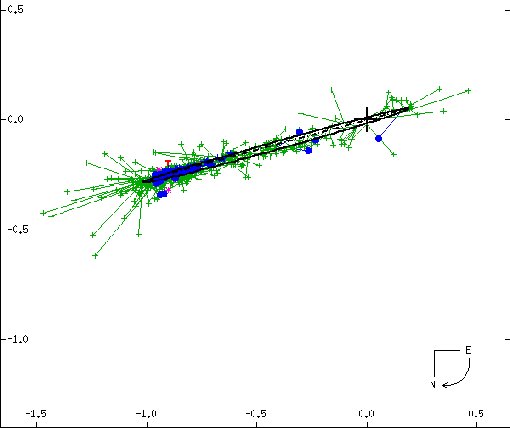
 |
Epsilon Equulei B orbits Eps Equ A (at the cross) almost edge-on with a period of 101.5 years on a quite eccentric orbit that takes them from as far as 60 U apart to as close as 10 AU (the eccentricity exaggerated by the orbital tilt). A little bit more tilt and the two would eclipse each other. In reality the pair orbit each other around a common center of mass. The scale is in seconds of arc; note how close the stars are. (W. I. Hartkopf and B. D. Mason, Sixth Catalog of Orbits of Visual Binary Stars, US Naval Observatory Double Star Catalog, 2006.) |